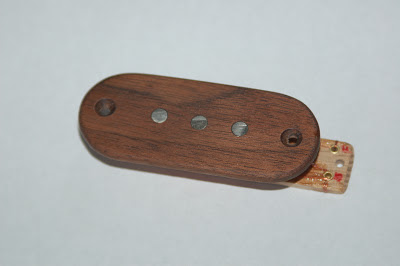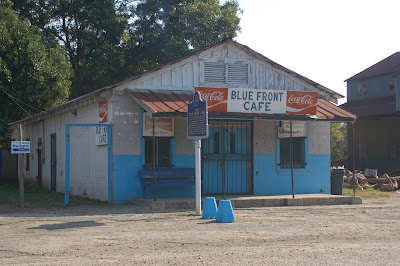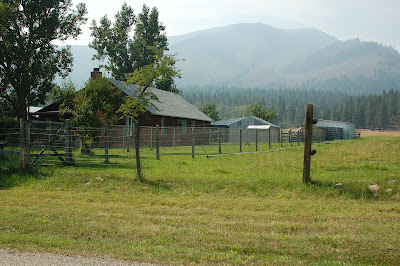The recent trip to Mississippi Delta Blues country has raised serious havoc with my guitar building. My free time has been centered around creating a pickup coil winder from the almost antique portable Singer Model 99 sewing machine that Roger Berry gave me.
There is no way to describe Roger, you gotta meet him to fully understand the kind of man he is. I don't really know Rog well, but I have developed very keen instincts over the years, and my instincts tell me he is one very kind, sincere, and generous fella. Roger is the only person I know, outside of my wife, who actually lives the credo,
"It is better to give, than to receive." And, he is at the ready to provide people with abundance, thus the treasures he insisted I accept, without allowing me to pay him for anything.
So, with all this said, Roger, I hope you like what I have done with a few of the gifts and ideas you shared with me.
After studying the pickup coil winder that Roger uses for his creations, I had a fair idea where to begin, but I didn't want to copy what Rog had done. So, I set out on a path that included finding an antique treadle sewing table on which my little creature could rest, and to design some of the options to complete the project.
The table was for sale from the back of a guy's pickup, and I didn't bother to inspect it carefully, I just loaded it up and hauled it home. On looking it over, I discovered a really cool old Rousedale machine inside, but that will be used for another winder later, to be given to another builder . . . ala Roger Berry's generous example.
I tore the thing apart, and removed all the unnecessary stuff, so that all that was left was the table as you see it in this photo.
The lid serves perfectly for a rest for the Singer. The adjoining fabricated mount for the revolution counter display and light dimmer switch, which controls the speed of the wheel, is tucked up tight for a very compact unit. You'll notice a brass bar sticking out on the right near the display, which is there to control where the wire falls on the spinning pickup (PUP) bobbin, which will be attached to the wheel when ready to spin out a PUP.

The little red knob is actually a small magnet stuck to a large washer. It serves to temporarily hold the hair-fine magnet wire used in the creation of a PUP. Yes, it's that fine. For you techno geeks out there, it is 43 ga. wire, so damn fine that I have to call on the assistance of my 10-year-old granddaughter Maggie to thread it through the eyelets on the bobbin. I'm old and cain't see well. q;-)


So, what's a bobbin, you ask. Well, it's the foundation for the PUP, and in the world of home- wound pickup coils, it is a couple pieces of material ---->

(wood, fiberboard, plastic, etc.) with holes drilled for metal posts to match the guitar string separation.
After the PUP is wound to the proper resistance, and soldering of lead wires is complete, and the PUP sealed, the posts are magnetized with a homemade doo-dad (bottom left), by passing the PUP back and forth through the space between the magnets on the re-purposed 'c' clamp.
Everyone does this stuff differently, but the basic concept remains the same. For ease of use and to keep things compact, I chose to mount my idea on the table surface.
It's necessary to figure out a way to handle the magnet wire that will be transferred from a spool to the bobbin. If you're using small spools it's a little more simple than what I had to think about.
Because, I'm a tight ass and I don't like to give my money away, I looked around locally for a wire source, and stumbled onto a five-pound spool for slightly more than I'd have to pay Stewart MacDonald for a half-pound. It's 39 ga., but the boys at StewMac told me it would work fine . . . just would need to use less wire to reach the desired resistance.
So, that's it! Thanks to Roger, I am now in the business of creating my very own guitar pickups with the TotalRojo Mojo.
One last look. It ain't store bought, but it works great, and I think it's pretty damn cool.
 Accenting the area above the open-back geared tuners on the headstock is a new issue US New Mexico quarter coin, which I thought would be proper given the intended destination, and the guitar will always be worth at least two-bits.
Accenting the area above the open-back geared tuners on the headstock is a new issue US New Mexico quarter coin, which I thought would be proper given the intended destination, and the guitar will always be worth at least two-bits.






















































